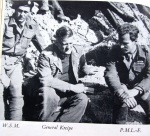Interesting development reported here and elsewhere Basically a covert electronic surveillance device was discovered somehwere ‘interesting” in Iran which seemed to have had a Victim operated explosive penalty integral to it. Poses interesting theoretical challenges for security staff and potential EOD response needed to a find of a suspected surveillance device.
Reportedly similar devices were discovered over the past couple of years in Lebanon, monitoring phone lines, and an associated explosive incident occurred, but it’s not entirely clear if the explosion in that case was directly integral to the surveillance device or dropped from the sky.
Of course there is a common likely perpertrator in both the Lebanese and Iranian incidents, but the potential threat of an explosive device to reduce the evidence associated with the electronic eavesdropping remains whoever the perpertrator is.
I think there are also some intreresting deeper aspects to this, namely:
a. Is the purpose to deter searchers?
b. Or to destroy sensitive components? – if so what’s so sensitive that it needs destroying?
c. How would your design a surveillance device with an associated explosive payload so that it was certain to destroy the component you are concerned about.
d. What are the EOD implications of such a design.
Seperately, the fascinating accusations that Siemens components sold to Iran had small quantities of explosives (and presumably an initiation system) hidden within them is intruiging. Siemens deny even selling the components. But let’s guess that someone in the West provided a component with hidden micro devices in them for sabotage…. and that’s a fascinating concept.

